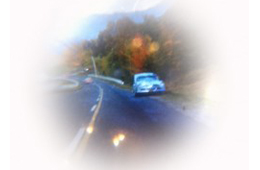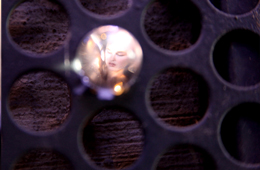-
Documentary Film Using Eye Tracking
posted on April 11, 2012
I am working on a documentary that uses the language of the eyes to edit the film. The subject is the language of the eyes themselves - how we use it, how we acknowledge or deny this, imagining how the language of the eyes could be used to archive what we see, and what this may say about how we see ourselves.
-
Character App: a Vibrant Research Project
posted on February 12, 2012
The Vibrancy Project is a project funded by a grant from the Intel Research lab. The grant was given to ITP to administer toward projects related to their research on "vibrancy" in technology. This post contains my progress and presentation to Intel.
-
Eye Tracking Attire
posted on December 1, 2011
The Eye Tracking Attire project is an exploration into the language of the eyes. Noticing a pattern of subtle but powerful eye based communication among New Yorkers, both using direct eye contact or gaze gestures, I designed a wearable device geared at making the gestures overt, therefore asking myself to acknowledge the language of the eyes. Becoming aware of the way we use our eyes may be a first step to harnessing this language for other forms of communication or interaction design.
-
Flow
posted on April 11, 2012
Johnny Lu and I worked on this visualization project, inspired in part by our generous use of water to flush waste. Flow is an ambient water fountain that (suddenly) turns on and off. The water flow is activated by toilet flushes and lasts for the duration of the flush. A viewer becomes aware of the water currently being used to flush waste.
-
Visible Voyeur
posted on April 11, 2012
Visible Voyeur is an art installation, made in collaboration with Emily Webster, that we originally installed on the highline park, and then at the !Spring!Winter show at 319 Scholes. The piece is a series of viewfinders, or LED-backlit peepholes, that invite the viewer to discover intimate views of people, inviting an act of voyeurism in a public setting. As the viewer discovers the viewfinders, and engages in the voyeuristic act, they are tempted to build narratives and question their sense of privacy in the public setting.
-
The Googler
posted on April 11, 2012
The Googler is an ambient application on a screen. It listens to the conversations in the space, re-interpreting it via speech recognition software and google search, to produce responsive imagery. The Googler shows images that are google search interpretations of its (sometimes faulty) understanding of speech, using both whole sentences and individual words to query the internet.
-
The Daily Mirror : an Exercise in Narcissism
posted on April 11, 2012
I was inspired last week by all of the talk about online - identity - driven narcissism. As we increasingly have to craft our online image to mind our identity, this image of the self has become even more conscious, present, and fabricated than in the days when Guy Debord coined the Society of the Spectacle. I have lately found myself starring more and more in the mirror, fascinated by the mixed familiarity and incomprehensibility of my own face. This is an exercise in viewing myself, where I draw a portrait of my mirror face with ink every day.








